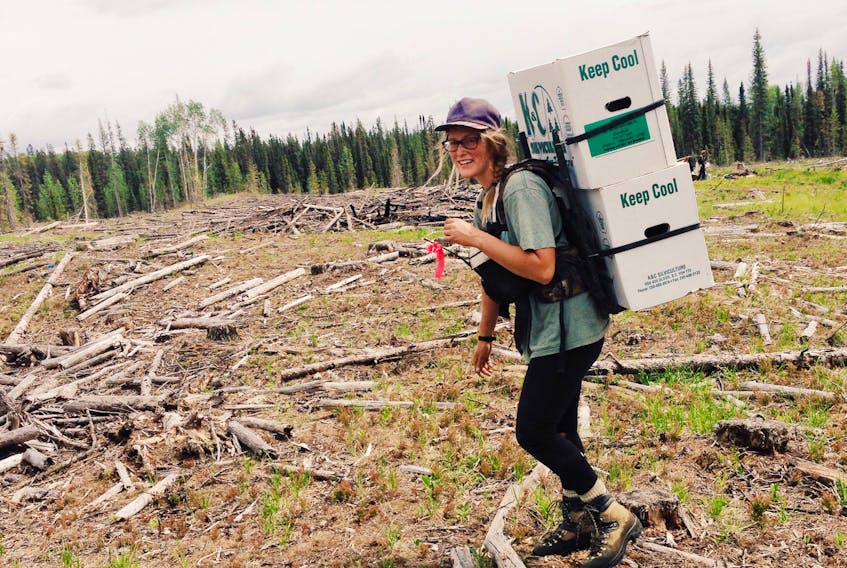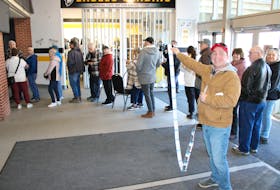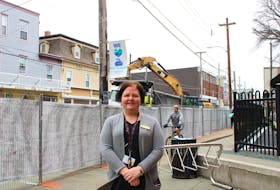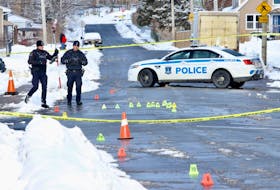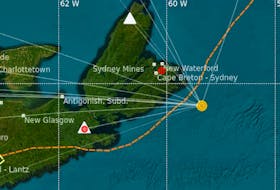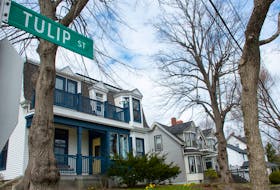MAITLAND BRIDGE, N.S. — Mary Jane Rodger has planted 500,000 trees in her lifetime. She knows people who have planted more than a million. So when the journal ‘Science’ came out with a report July 5 about how many trees could be planted around the globe to bring down carbon dioxide in the atmosphere by 25 per cent, the numbers didn’t scare her.
It called for a trillion trees on almost one billion hectares. In 2018 the Intergovernmental Panel on Climate Change advocated reforestation in a big way. The report from ‘Science’ shows where those trees can be planted and how many are needed.
“The report is positive, creating future forests is a step in the right direction, but can’t be our only solution in the fight against climate change,” said Rodger, general manager of the Medway Community Forest Co-op where they’ve already planted almost 100,000 trees in areas on Highway 8 in Annapolis County.
Rodger pointed out that there are different kinds of planting, and in the IPCC report and the ‘Science’ report, they’re talking about completely new forests.
“The majority of planting that will have significance in Canada is known as afforestation, or the act of planting trees in ‘new’ areas (ie. fallow farmland), therefore increasing the amount of forests over time,” she said in an email interview. “When trees are cut over, there are requirements to reforest, depending on how well it’s naturally regenerating. If natural regeneration is not adequate, the site is planted.”
She said the MCFC also completed additional planting following the Seven Mile Lake Fire in 2016 to ensure that the area had sufficient stocking of trees after such a significant fire.
EXISTING FORESTS
She said the report accentuates that it is even more critical to try to maintain existing forests.
“The report is based on the assumption that current forests stay in a forested state,” she said. “This is a much bigger issue in the developing world where forests are frequently being converted to agriculture (land) or plantations, which impacts biodiversity.”
She said that while the numbers may sound scary, they’re not.
“I’ve personally planted over 500,000 trees and I know many people who have planted over 1 million trees,” she said, “and about 200 to 250 million are planted each year in BC alone. So, if you think about it, one trillion is not an unobtainable number.”
Rodger said tree planting is arduous work, but it can be mechanized when planting old farmland where terrain is flat.
See Also: A GOOD PLAN
“Tree planters who are working for reforestation companies are typically contracted by lumber mills to replant areas that have been clearcut, which isn’t the type of planting that we need to be encouraging according to the report,” she said. “An average professional tree planter working in Canada can plant between 1500 and 4000 trees per day and works about 30 to 60 planting days per season. At one point during my career in reforestation, I ran a crew of 18 people that could plant 50,000 trees in a day.”

FINDING SPACE
Rodger said given the number of people in the world, planting the trees is not impossible, but finding the space for it might be.
“There might be interesting opportunities to create agroforestry or food forest projects, that limits the impact on food systems,” she said.
She said ordinary people can get involved.
“Get their hands on a few trees and plant in their own backyard,” she said. “If every homeowner in Canada did this, we’d already make a huge impact.”
“In other province’s, like Ontario, the government provides tax incentives for afforestation projects on fallow farmland,” Rodger said. “This could be integrated into projects that also stimulate the local food economy (such as agroforestry), to promote carbon sequestration and food security at the same time.
MCFC
“Since 2016, the MCFC has planted nearly 100,000 trees on our Crown Land license area, but will likely be planting fewer in the future as the prime objective of most of our forestry operations is to promote natural regeneration,” Rodger said. “We advocate for forestry practices that sequester carbon over time, and do not induce soil carbon loss, rather than intensive forestry practices that ‘promote’ the carbon cycle by clearcutting followed by replanting.”
She said planting diverse forests is also important.
“If only one tree species is being planted, that will limit the potential biodiversity, although will still serve as a carbon sink,” she said.

